A young artist wakes up to a life she doesn’t recognize, haunted by nightmares of drowning in a void, and she begins to question her sanity. (imdb)
Tag Archives: dream
2426 – Bringing Out the Dead (1999)
timespace coordinates: New York City night drive // night shift in the early 90’s

Bringing Out the Dead is a 1999 American psychological drama film directed by Martin Scorsese and written by Paul Schrader, based on the novel of the same name by Joe Connelly. It stars Nicolas Cage, Patricia Arquette, John Goodman, Ving Rhames, and Tom Sizemore. (wiki)


2399 – The Sweet East (2023)

The Sweet East is a 2023 American satirical surrealist road film directed by Sean Price Williams in his directorial debut from a screenplay by Nick Pinkerton. It stars Talia Ryder, Earl Cave, Simon Rex, Ayo Edebiri, Jeremy O. Harris, Jacob Elordi and Rish Shah. (wiki)


2350 – Journey to the West (宇宙探索编辑部) 2021
timespace coordinates: present-day China \ mostly in the province of Sichuan
I have mentioned this movie in a post in 2022 on the SFitze substack. It came to my attention after a post by respected geek and translator Xueting C. Ni’s TW below:
Director: Dashan Kong
Now I finally got to see the directorial debut of Dashan Kong, after my new friend Zixuan a 25 year old translator and SF studies scholar at the SFW (Science Fiction World – the larges circulation prozine in China) told me that he watched it 3 times.
He recommended watching it with some good tea or some good booze in a warm, cosy place. And this I did. I do not pretend to know why this small-budget funny, melodramatic, nostalgic ‘first contact’ weird movie made such a big impact on him or his peers or why he scored 8.4 out of 10 score on Chinese movie/book/music recommendation network Douban. But I will try to say why you should watch and search for a subbed version of this small serendipitous gem.
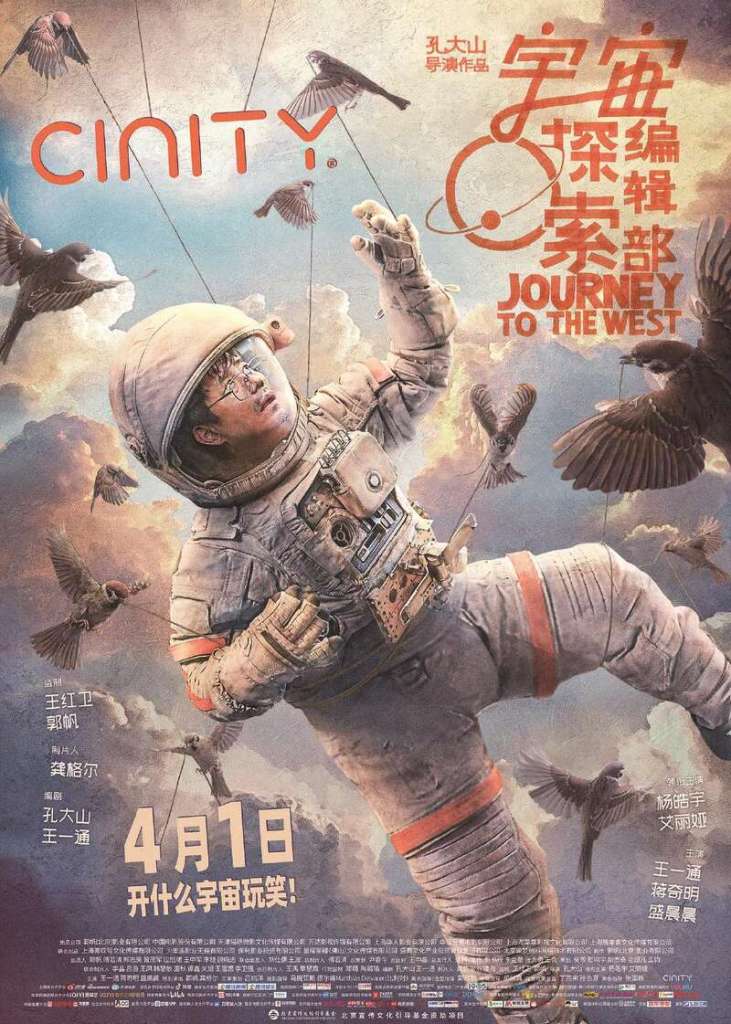
What is the merit of such a movie in a country that tries so much to vaunt its role as a leader in scientific and technological breakthroughs? What is the value of small-budgeted SF films in an era when bombastic productions dominate the market? We expect a contemporary cinema audience to be dissatisfied or nonplussed if it does not get its portion of stellar battles, kaboom FX and wandering planets jumping from their orbit. This movie begs to differ and carves a niche for itself. Important to to mention that The Wandering Earth director Guo Fan aka Frant Gwo makes a cameo. He’s the one who buys the damaged cosmonauts costume – it’s almost self-ironic in a sense. How do these big productions get made with money trickling from the successful ones or is it more like we need attention for big ones so small ones can also co-exist?
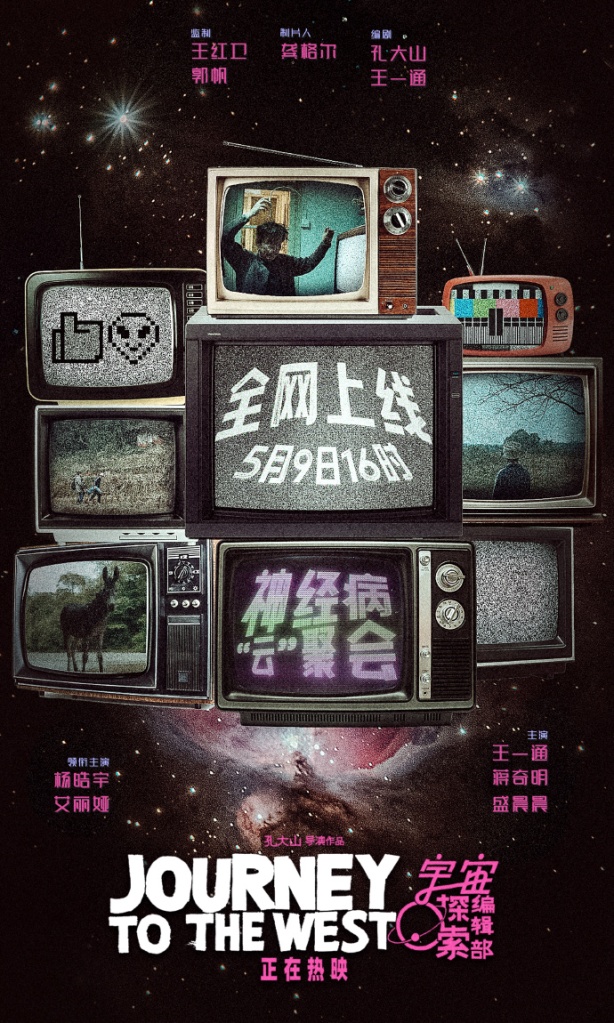
On the technical side: the movie starts with a VHS report from 1990 – with a youngish Tang Zhijun, the editor of the popular science magazine Universe Exploration Magazine obsessed with aliens talking about the importance of first radio transmission of Berlin Olympics and SETI. Flash forward and we get this aging and completely Absent-Minded Professor like figure with the remaining contributing odd-ball members of the Universe Exploration Mag in their rundown bureau. It’s an image of funny helplessness with even a Hello Kitty vaporizer ij the room. There’s the unmistakable sense they are unable to wade through a world full of attention economy traps and accumulating bills. They rent out their old Soviet cosmonaut costume for an advertising campaign for an energy company called “Apollo”. They are the first to fall for the exploitative viral media advertising extra sensory phenomena with click bait sensationistic news. They seem to be at the bottom end of the economic system having to eke a living on the underbelly of a booming, technologically competitive, attention grabbing and gimmicky world. Such mags existed all over the whole East bloc, but they had to either close down or try and reinvent themselves in order to survive in an era of boom and bust, and a constant defunding of the research institutions they depended on. It is for me very easy to relate to something like this. Some became allied to the start-up world and others had to try hard to keep up with various technological hypes.
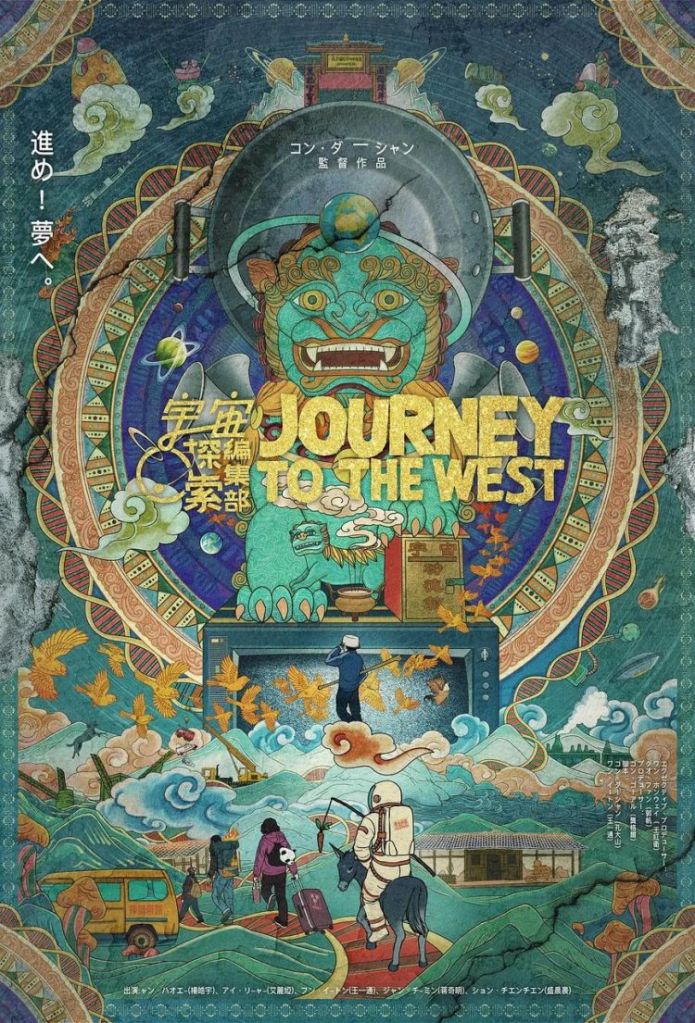
The movie uses a lot of faux documentary material, and has the feel of a digital phone recording with a selfie stick – almost like small TikTok reels. Nevertheless, this does not represent an instantly clickable bait-click material. Media and especially old (dead) media is present in a very direct way – snow crash TVs (the Poltergeist effect), radio and even an ominous Giger Counter are all present and waveform receivera. But they are channeling somehow the background radiation of the universe not radioactive fallout or TV news. They are also channeling the inner worldof these characters.

These old 20th century technologies, no matter how dated, or even Cold War tech they seem, have gotten other uses. In a sense ufologists have been re-engeering them for their own (higher) purposes.
So now imbibed with some new meanings, extraordinary energy or hidden power, they are ways to access the very basis of reality and a dreamworld that escapes the rest. A reality that throughout the movie is most unreal, surreal or anti-real. The movie is considered by some as “literary science fiction” – and this might instantly label it as something pretentious or nostalgic, which is completely at odds with a lot of hard SF popular in China. But if you want to consider it literary SF – then it is so by its appeal to a sort of lyrical, poetic and evocative power that SF irradiates in comparison with realist, mimetic fiction. It is not literary in its bookish immediate sense. The most salient characters are somehow all neurodivergent (even it does not get an explicit mention as such). Characters have lived trough various troubles, have various sensibilities and somehow stay open to the outside, no matter how unimaginable or even incredidble. These ‘specially endowed’ persons in the movie do not allow us just access to parallel worlds, multiverse, portals, aliens visitors or UFO landings like in the traditional SF narratives. They are very much linked to embodied realities, to the very dirty, muddy countryside, the sort places where these encounters happen apparently. The boy with the metallic pot on his head (a sort of blessed fool character almost) is a dictionary carrying poet, not just shaman (poisoned mushrooms also have an important role) but also some sort of spoken word performer in the middle of fields and a Taoist inchoate landscape. He is closer to the “cosmic” and the “comic”, a dramatic creature close to an embedded SF reality that does not get mentioned in many SF on-screen narratives.

One of my favorite characters is the trolley bag – carrying madame. For most of the movie she seems the only realist (sane?) person in the movie. But I think she is the true Sun Wukong. She is the Money King. I say this based on the fact that she is the only one that pulls faces and pokes fun at the elderly ufologist nincompoop master Tang Zhijun. If you read the original recently you will understand what I mean. I did not ask my Chinese friend what he thinks, but this is my feeling. I also take my conclusions from the above poster that makes her hold a selfie stick – the only up-to-date person in a whole ufologist team that does not feels technologically out of place in the contemporary world.
She complains all the time but she also carries the batteries for his Giger counter in her trolley. Isn’t that enough? These are my cue for the Monkey King, that is always an unwilling member in the original 16th century epos attributed to attributed to Wu Cheng’en. Like the legendary monkey, she is forced and incarcarcerated by Buddha in the original Journey to the West and obliged to follow the witless and frankly easy to poke-fun-at monk Xuanzang (602–664), the Buddhist sutra translator. She is the practical person, she is the one that is always debunking and always telling things how they stand: “A lunatic grand party”.
Of course there are several contenders for that role – even the character of the drunk could very well be the monkey but he is mostly the pig in my view, but why not think of the Monkey King like a sort of distributive or collective character, since this is what it was. I believe in the original reading from the Maoist era or even earlier this may have been an embodiment of the voice of the people, the voice of the masses and also of the unrepentant and the tricksterish.

With that in mind, she might be the only one having a bit or reason or some sort of materialistic compass in a place of illusions and near-hallucinatory experiences. I really like the fact that she always is the one to question the whole quest, and also the one to remind us about the harsh laws of thermodynamics under the market economy (and energy scarcity): someone has to pay for the heating, someone has to pay for the repairs and for the upkeep! I of course like the Red Cap guy, the one that travels in his childish UFO car and has met Tang at some earlier phase and is now a mysterious meteorite hunter.

In the 1990 your entrepreneurial plans did not guarantee you will be a winner later on. Having a great idea did not guarantee it will become a commercial success. Following the “everything goes” mantra of the 1990s, why not thinking that you could live off selling telescopes, because how cannot one not look above? Yes, but increasingly throughout the decade the push to encourage curiosity about new discoveries became second fiddle to other priorities or it pure and simply made some people appear like complete loosers of the market economy. Is it great to make your passion something competitive, or at least transforming a telescope into another commodity – like TV sets, radios, mobile phones etc. There is something eminently ridiculous in using cosmonaut suits to sell products – but we are living in this world. Daily I see adverts for banks, various products, shoes superimposed on CGI imagery with cosmonauts, or Black Friday adds on the moon.
There is here an obvious hint at how some of these pops sci dreams of the 1990s did not played out. Or even the mystery, weird, fringe Fortean things came to be transformed into conspirative thinking. Maybe there is also a kind a moralistic play here. The movies shows a lot of missing pathways, a lot of possible venues that did not bear fruits, a lot of missing opportunities and questions. How did those initial drives, the early naive belief in the basic science popularization got abandoned for more commercial or more infotainment pursuits?

There is also the possibility that this Journey to the West talks about larger issues that bedevil those that got really involved in the China Dream at this historical moment. There is an immense need for diverting more investment into its social sector (the percentage of the GDP allotted to social issues is very small compared to even its nearest economic competitors). All in all, the scope of alleviating poverty AS WELL as raising its education and reskilling its still unskilled rural population are looming big. No mean task, because China has still a lot further to go. At the same time the movie presents some sort of “Science Wars” between humanities (understood as non-math, poetry, even sentimentalism) and a different approach to math or physics (thinking about the entire Sokal hoax affair and what Andrew Ross said at the time about how positivism opened up a second front – beside the anti-superstition campaigns).
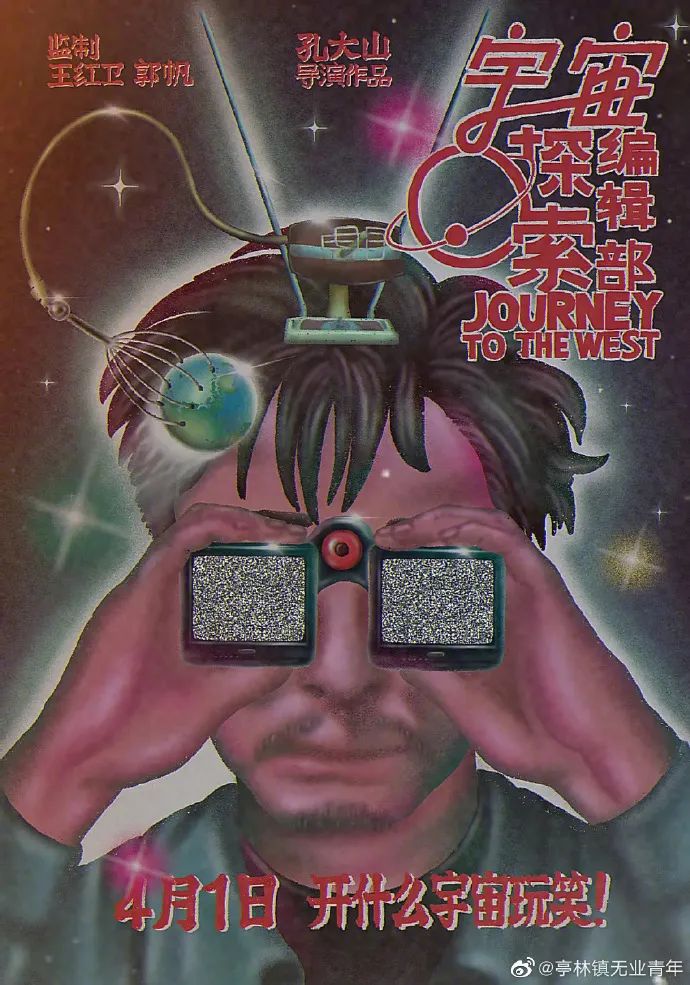
Superstition or what one might call folkloric beliefs, including signs and remains of residual village belief systems –are tolerated, but also considered deviations. This has been the whole deal about modernization from the May Fourth Movement on – of overcoming superstitions that are slowing down China, old ideas and old ways hamper it joining modernity. The result is that there is a new hybrid – in the way ufology overlaps with these living folkloric traditions brings about a sort of whimsical, millenarian expectations about first contact which have been pointed out by researchers of UFO religions previously. But it’s unjust to call it just ufology as superstition – it’s also hidden even more profound meanings regarding nature or the natural world as a place of encounters, of odd adventures that lead back to very banal and worldly happenings. Happenings such as erring newlyweds in search of best shooting spots in nature or photographers lost in the wilderness while searching for such commercially ideal spots.

But there is new High Weirdness out there. Hard-to-believe scams (think canned Martian sand for sale online) and doughy aliens frozen inside homemade freezers are everywhere. This is not Area 51. They appear to be the product of a wish to attract some city tourists to the remote corners of the land, areas in need for cash and a bit of attention.
Isn’t this worthy in itself? What could be devious in bringing a group of hapless alien seekers to the most unmodern, and underdeveloped areas? In places where they could also listen to the locals’ needs, while initially following the “carrot” of stories mentioning preposterous things? Journey to the West (in Sichuan) may the difficult travels out of the precarity of local pop sci initiatives to the remote precarity of villager life, where mostly women and odd figures live, places that have been left behind by migrant laborers traveling in search for work in the big cities. What is the carrot?! Is it baitclick? Is the carrot the UFO? Is the carrot some lingering SF feel?
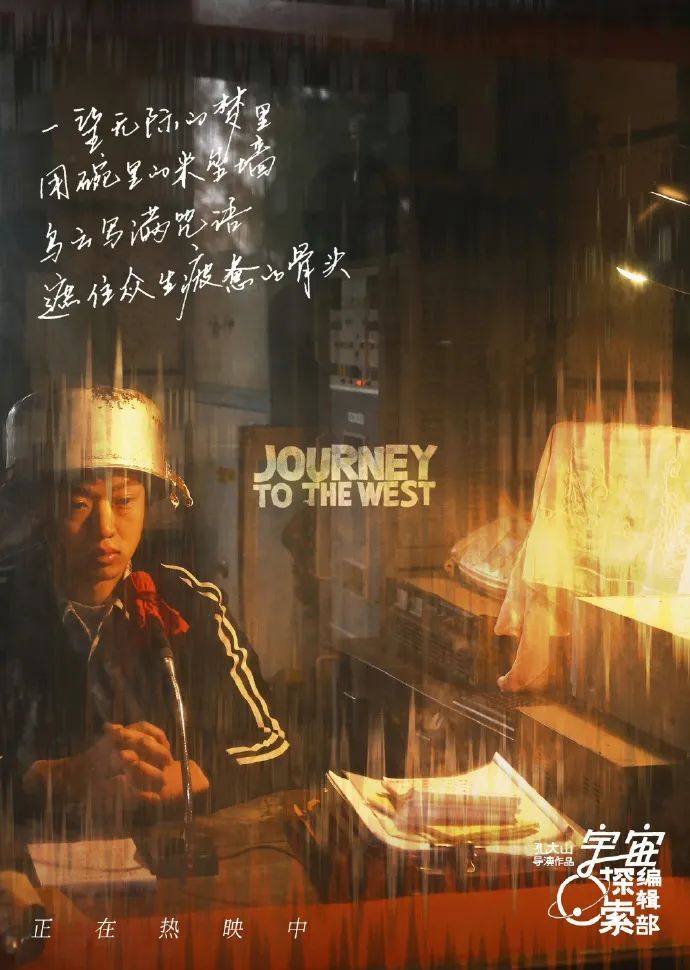
That does not mean that you can pay your electricity or heating bills by doing these UFO scoops. Some will of course complain that the ufological is getting politicized, but there is no way around it, ufology was birthed during Cold War and America’s paranoia around Soviet technology.
In this geopolitical historical sense the Sputnik was instrumental in garnering the funds for the establishment of DARPA and Darpanet. So, ultimately, this new Journey to the West is in a sense a Journey along ideological encampments as well. Inside capitalism, you had various critical ufologies as well as conservative ones. There is the bizarre Posadist end-of-the-world Trotskist World Revolutionary visions. Others leaning towards the conservative, highly anthropocentric, modeled on the capitalist model. Do not know if “right-wing” and aliens go together, it is almost a contradiction in terms – should not aliens be different from what we already have?
If stock Independence Day aliens are just advanced (read rapacious or exterminist) humans in search for more planets and species to enslave, Tang appears then a diverging view akin to the radical ufologies (here I would put Italian art pranksters Men In Red). For Tang advanced species cannot be predatorial but somehow akin to some socialist ideal of universal peace. There is also another version – a more Taoist one maybe, where the first contact results not in answering all the existential problems but in recognizing the universality of such questions as well as the impossibility of a straight 0 or 1 answer.
I was puzzled also by the somehow quaint – genocentric imagery, the double helix (DNA) appears to hold some sway over the protagonists. The helix also appears in the prehistoric cave art – again this ancient past somehow repeating our own certitude (and the certitudes of the biotech companies) that there at the level of genes lies the secret of life. Not only have numerous authors debated such genocentric views, but they sometimes also announce the unwelcome persistence of eugenics in mainstream Journals major academic publishers such as Elsevier and Springer “with influential and respected scientists on their editorial boards”. So we are not talking about fringe views here.
I get how somehow the Fuxi or Fu Hsi (伏羲) Chinese creation myth rhymes so well with the entire Human Genome Project so that the Journey to the West director or scriptwriter could not let go of it. But for me and maybe others following closely the history of biology, DNA is such a 20th century imagery (or even mid-20th c or at least 2000s). Instead, it would be interesting to see how SF movies overcome such hurdles in an age of epidemics, epigenetics, metabolomics, microbiomics and viromics, proteomics, metagenomics or synthetic life. But of course, who can deny that a plethora of biotech companies have entrenched this evocative double helix imagery, including the early 1990s Jurassic Park movies. In this new Chinese movie at the end the universe, DNA is a ladder to the stars, the macro reverses into the micro of the DNA. Although even this may be secondary to the main search for love.




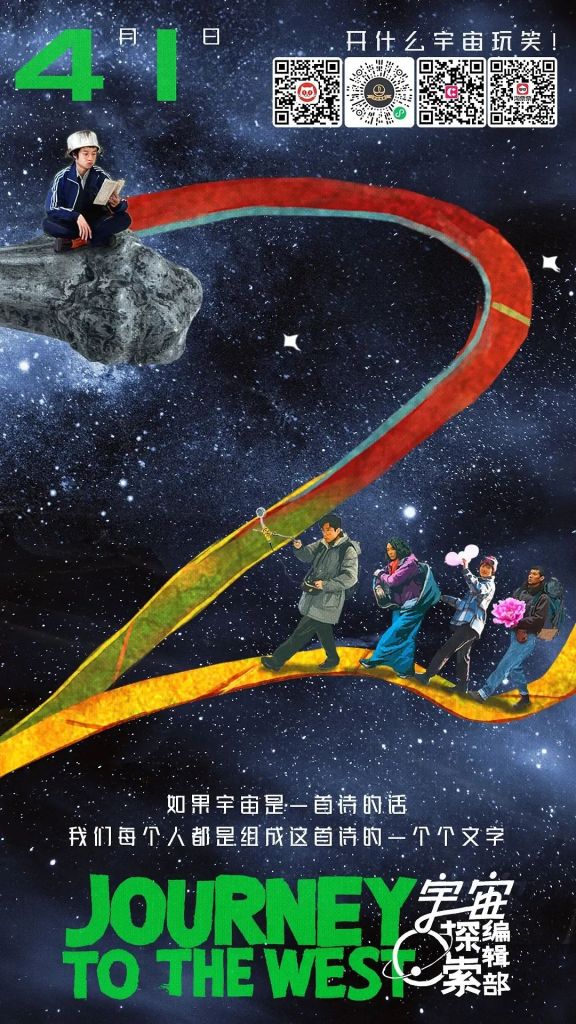
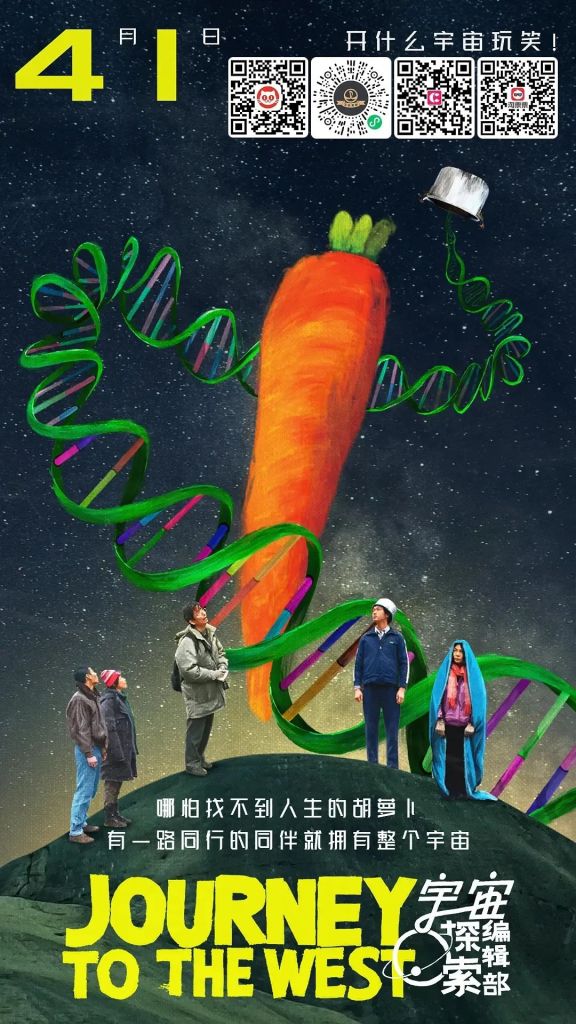
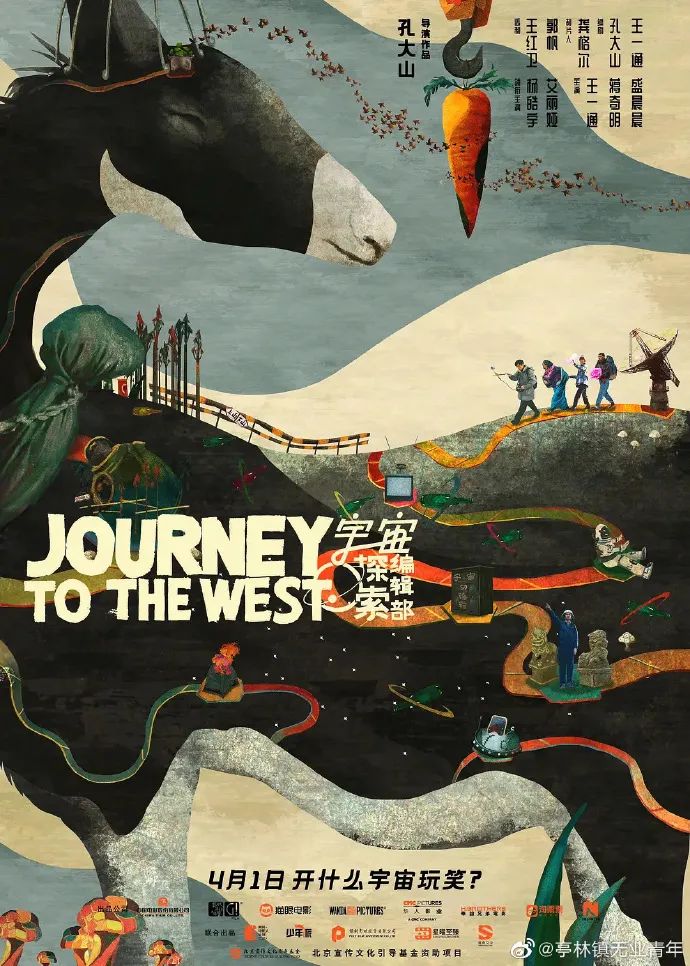
2340 – Gran Turismo (2023)
timespace coordinates: 2010’s UK, Dubai, Japan, France, Germany, Austria, Turkey, Spain

Gran Turismo is a 2023 American biographical sports drama film directed by Neill Blomkamp from a screenplay by Jason Hall and Zach Baylin. Produced by Columbia Pictures, PlayStation Productions, and 2.0 Entertainment, it is based on the racing simulation video game series of the same name developed by Polyphony Digital.

It tells the true story of Jann Mardenborough, a teenage Gran Turismo player who became a professional racing car driver. The film stars Archie Madekwe as Mardenborough alongside David Harbour, Orlando Bloom, Darren Barnet, Emelia Hartford, Geri Halliwell Horner, Djimon Hounsou and Josha Stradowski. (wiki)
2329 – My Animal (2023)
timespace coordinates: 1980s small-town Canada

My Animal is a 2023 Canadian supernatural horror romance film directed by Jacqueline Castel in her feature directorial debut. Starring Bobbi Salvör Menuez, Amandla Stenberg and Stephen McHattie, the film follows a young woman who is forced by her overbearing parents to keep her lycanthropy a secret, until she begins to fall in love with a figure skater. (wiki)

2281 – Kaboom (2010)
spacetime coordinates: 2010 idyllic Southern California
Kaboom is a 2010 American/French comedy-drama film written and directed by Gregg Araki and starring Thomas Dekker, Juno Temple, Haley Bennett, Roxane Mesquida, Kelly Lynch, Chris Zylka, Nicole LaLiberte and James Duval.

A science fiction story centred on the sexual adventures of a group of college students and their investigation of a bizarre cult, the film premiered at the 2010 Cannes Film Festival, where it was awarded the first ever Queer Palm for its contribution to lesbian, gay, bisexual or transgender issues. (wiki)









